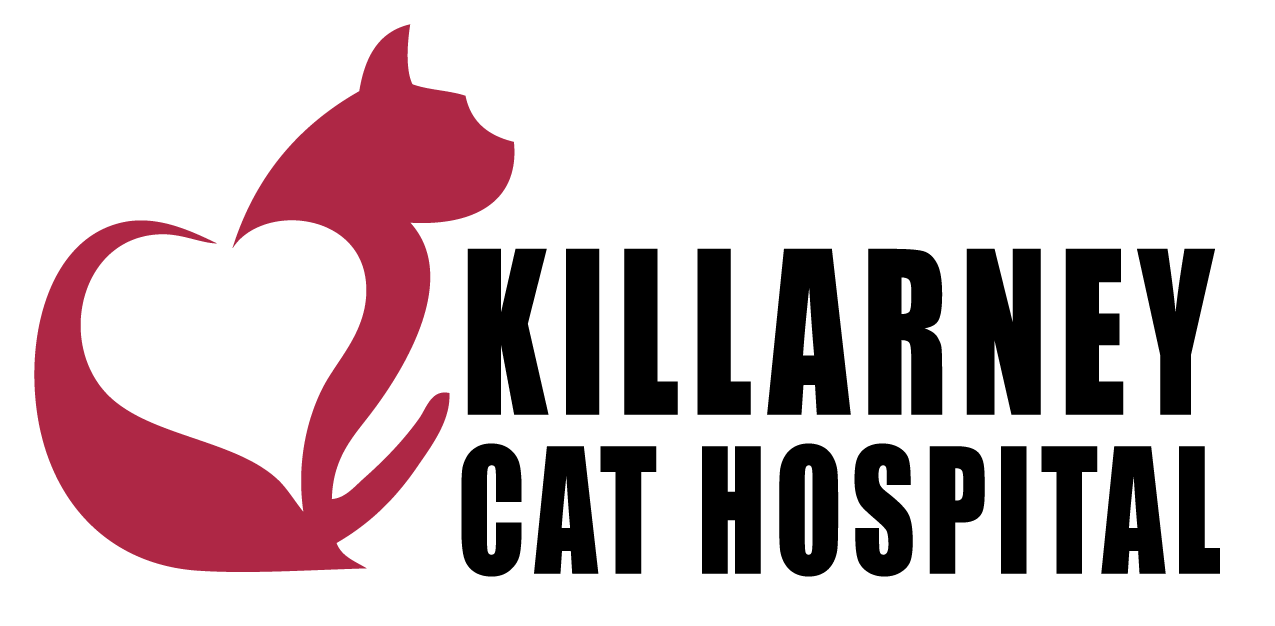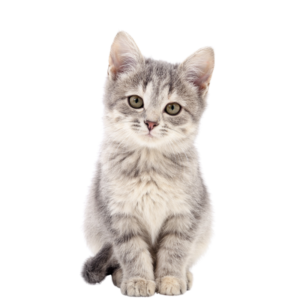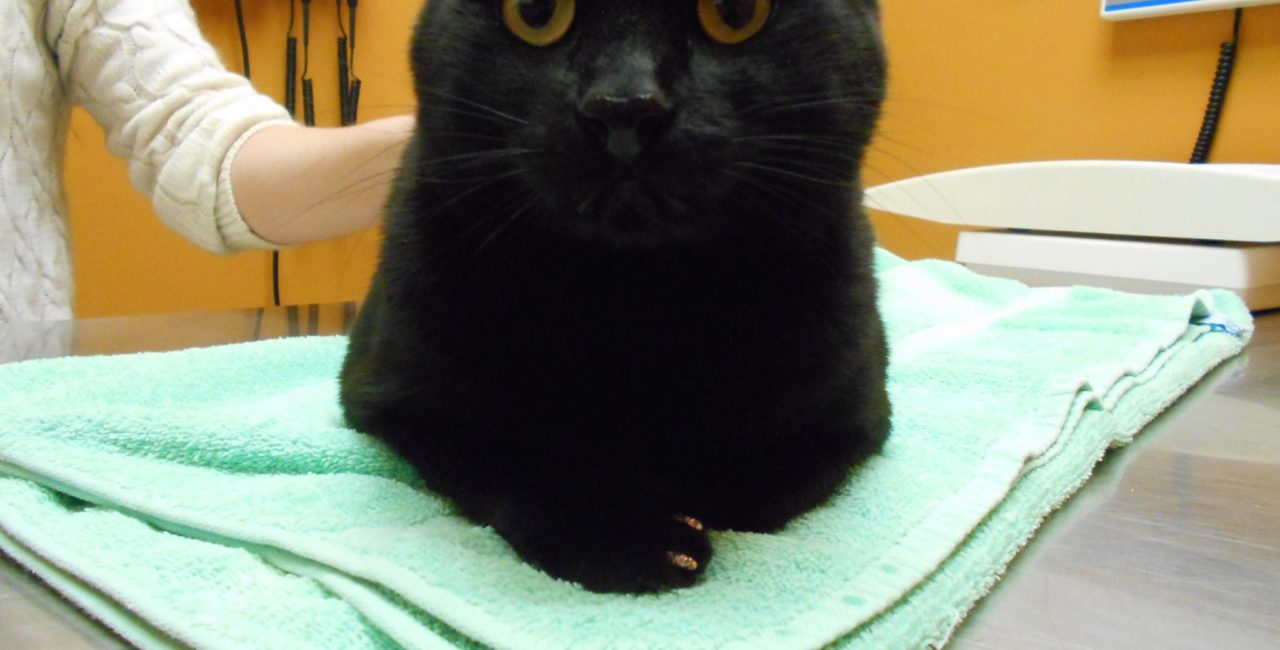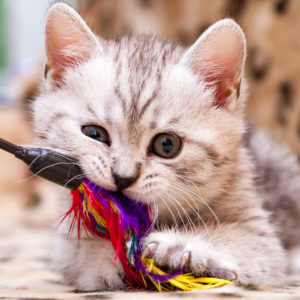1. Making You and Your Cat Feel at Home
Our first priority is to create a calm and inviting atmosphere. We know a visit to the vet can be stressful and we work hard to minimize that anxiety. We use feline-friendly techniques including allowing the cats to assess us before we assess them, allowing them to stay in their carriers with the lids off when possible, offering soft bedding for the exam, and employing Feliway calming diffusers throughout the hospital.
2. Getting the History
This first part of your veterinary consult serves two important purposes. First, it allows us to talk with you and review your concerns regarding your kitty. Second, it allows your cat to become acclimated to our voices and the exam room prior to being handled. During this part of the consult, we will ask you a number of questions to determine your cat’s lifestyle and possible risk factors for various illnesses. We will address any concerns you have coming into the visit.
We will also ask some general questions. Is your cat indoor or outdoor? What kind of food does he eat? Has her appetite, thirst, or activity level changed? Have you noticed any vomiting or diarrhea? (Hairballs count!) What about coughing or sneezing? Any changes in litter box habits? Finally, do you have any concerns about your feline friend’s behavior? This history is invaluable as we move forward with the exam and potential diagnostics/treatments. We recognize that you know your cat best and your input is very important to us.
3. Discussing the Plan for the Vet Visit
At this point, we will assimilate the information you have given us and our observations of your kitty. We will discuss our thoughts and concerns from a medical perspective and advise you as to what we will be looking for on exam as well as any other tests or medications that might be needed. Based on your cat’s personality, we will also discuss the best plan for examining her. If she has come out and started to explore during our talk, we can usually examine her on a towel on the table. If she is still a bit fearful and staying in the carrier, then we try to either remove the top portion of the carrier so your cat may stay in her “safe place” or if necessary, gently coax her out of the carrier.
We may offer treats or catnip to entice your cat and help ameliorate his fear. We work hard to keep your kitty with you at all times so that he has you present to reassure him. We are proud to be certified as a Gold Level Cat Friendly Practice and these techniques work for us about 95% of the time. However, if your kitty is still quite fearful, we may offer sedation so that we may perform a thorough exam without causing him undue stress.
4. Physical Exam
Now we are ready for our exam! This hands-on assessment of your cat gives us critical diagnostic information and is the most important test we provide. Therefore, we recommend exams yearly for most patients and every 3-6 months for our senior patients or patients with chronic disease. We also want you to be thoroughly informed about the detail that is included in each exam that we perform.
The exam is usually broken into segments based on organ systems and goes from the head to the tip of the tail so that nothing is missed. First, the eyes and ears are assessed. We look for any discharge or abnormalities on the surface and then look deeper as needed with our ophthalmoscope and otoscope to assess the inner eye and ear. Next, we will palpate lymph nodes under your cat’s chin and in front of her shoulders. We feel for symmetry, size, and shape as changes in the lymph nodes can signal infection or inflammation. We palpate down the front of the neck to look for a potentially enlarged thyroid gland. We will assess your kitty’s entire oral cavity, looking at the gums and teeth, as well as the tongue, tonsils, and remaining surfaces to check for lesions or dental disease.
Moving from the head to the chest, we will listen to the heart and lungs. We will check that there are no abnormal heart sounds or rhythms and that the heart sounds match the pulses. We listen for clear lungs and note any abnormal noises such as wheezes or crackles that may signify disease. We note heart and respiratory rate and may also use this time to get the weight of your cat in order to complete our vital sign assessment. As we move into the abdominal palpation, we assess the abdomen as a whole and by individual organs. We palpate liver, kidneys, intestines, and bladder while also noting any possible abnormal structures within the belly. Finally, we run our hands down all the surfaces of your kitty to scan for skin lesions. We end at the legs, which we flex and extend to look for any musculoskeletal changes and palpate one last set of lymph nodes in the hind limbs.
5. Diagnostics and Treatments
If your kitty is visiting us for wellness care at this visit, we will advise you on necessary vaccines, deworming, and lab work to keep your feline friend healthy. Our recommendations are based on those provided by specialists in preventative care medicine. We receive input from the North American and International Vaccine Task Forces. We also base our advice on aspects of your cat’s lifestyle such as age and any outdoor exposure. If your kitty is over the age of 7 years, we do respect him as a senior cat and will recommend lab work as the best way to catch treatable diseases as early as possible.
If your kitty is visiting due to illness or injury, we will assess his condition and then provide you with a treatment plan. This plan may include lab work, radiographs, and treatments such as fluids or medication as needed. If your kitty needs to stay in the hospital, we will provide a detailed written plan with the diagnostic and treatment modalities with which we expect to provide your cat. We may also set up times for visits at this point and will provide phone updates as well.
6. Praise and Rewarding our Patients
While we strive to maintain a calm, pleasant environment for our feline friends, we do understand that a veterinary visit can be stressful. Therefore, during and after procedures that your cat may find bothersome, we do ask your permission to reward and distract your kitties with treats. Each cat is different and enjoys different things. However, we will generally start with edible goodies, catnip, and toys. We find that many of our kitty patients don’t even notice some treatments if they are distracted by a tasty morsel!
7. Reviewing Findings
At the end of the exam we will consolidate our findings and review any concerns or abnormalities with you.
8. Answering Questions
At Killarney Cat Hospital, we are partners with you in your cat’s care. We encourage you to ask questions and participate in the diagnostic and treatment process. You know your cat best and we want you to feel knowledgeable and comfortable with all we do.
9. Our Recommendations
Following our discussion of your visit, we will summarize the individualized treatment plan for your cat. We respect the individuality of each of our patients and clients and will do our best to tailor our plan to your specific needs.
10. When will we see you again?
After our appointment we will advise you when we should next see your kitty. Sometimes we may schedule a time to touch base via phone to make sure all is going well. We will also do our best to give you an idea when we recommend next seeing your favorite feline for continued care.
by Liz Bolton, DVM




